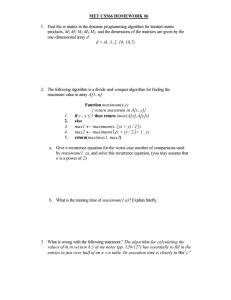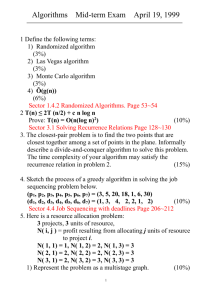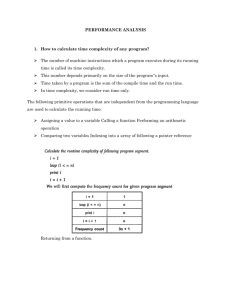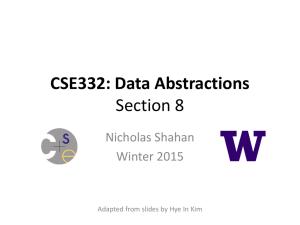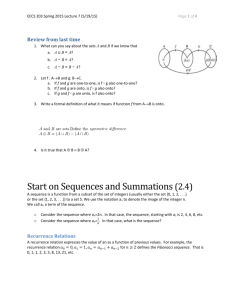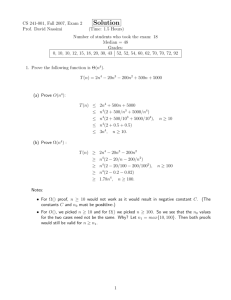model solution
advertisement
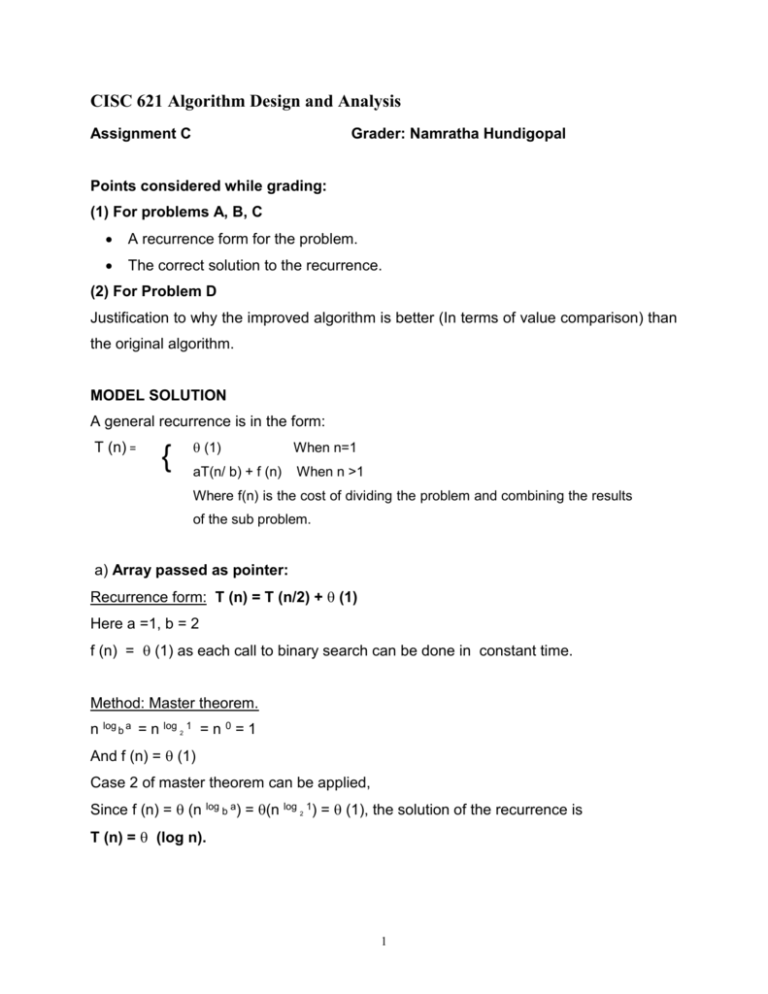
CISC 621 Algorithm Design and Analysis
Assignment C
Grader: Namratha Hundigopal
Points considered while grading:
(1) For problems A, B, C
A recurrence form for the problem.
The correct solution to the recurrence.
(2) For Problem D
Justification to why the improved algorithm is better (In terms of value comparison) than
the original algorithm.
MODEL SOLUTION
A general recurrence is in the form:
T (n) =
{
(1)
When n=1
aT(n/ b) + f (n)
When n >1
Where f(n) is the cost of dividing the problem and combining the results
of the sub problem.
a) Array passed as pointer:
Recurrence form: T (n) = T (n/2) + (1)
Here a =1, b = 2
f (n) = (1) as each call to binary search can be done in constant time.
Method: Master theorem.
n log b a = n log 2 1 = n 0 = 1
And f (n) = (1)
Case 2 of master theorem can be applied,
Since f (n) = (n log b a) = (n log 2 1) = (1), the solution of the recurrence is
T (n) = (log n).
1
b) Array passed by value:
Let N is the size of the array. Since the entire array is copied on each call to binary
search we get f (n) = (N)
The recurrence form: T (n) = T (n / 2) + (N)
Here a =1, b =2, and f (n) = (N)
First method
The height of the tree is log2n. The solution of the recurrence is at most the number
of levels / depth times the cost at each level. Which is O (N log 2 n)
Second Method
T (n) =
{
T (n / 2) + C1 N + C2
When n > 1
C1 N + C3
When n = 1
Where N = Size of the array
T (n)
= T (n / 2) + C1 N+ C2
T (n)
=T (n/ 4) + 2(C1N+ C2)
T (n)
=T (n / 8) + 3 (C1 N + C2)
Each step, n is divided into one higher power of 2, and one more
C1 N+ C2 term is added.
T (n)
≤T (n / 2i) + i (C1 N + C2)
When i = log n
T (n)
≤T (1)+ log n (C1 N + C2)
T (n)
≤C1N+C3+logn (C1 N+C2)
← Substituting for T (1)
=C1N+C3+C1 N log n +C2 log n
=C1 N log n+ C1 N+C2 log n+ C3
Ignoring lower order terms in the above we get
T (n)
= 0 (N log n)
2
Note: Master theorem cannot be applied to this problem as f (n) = (N) is not
polynomially larger than n log 2 1.
c) In this case, only the sub array consisting of (e-b) elements is copied at each step.
Hence f (n) = (n / 2) = (n)
Recurrence form: T (n) = T (n / 2) + (n)
Here a = 1, b= 2 and f (n) = (n)
n logba = n log21 = n 0 = 1
Also f (n) = (n log21+) = (n0+) where =1
Case 3 of master theorem applies if we can show the regularity condition holds for f (n).
For sufficiently large n,
a f (n / b) ≤ c f(n) ⇒ f (n/2) = c f (n) ½ ≤ c <1 , hence we get
T (n) = (n).
d) The average depth of recursion for a binary search is about log 2 (n). The original
algorithm did two value comparisons at each recursion step (one for
(*p = *b) and one for (*p < *m) ) leading to a total of (2 log n) value comparisons.
In modified algorithm there are (log n) (*p < * m) and one (*p = *b) [at last step]
comparison leading to a total of just (log n+1) value comparisons. This indicates that the
modified algorithm will run about twice as fast in terms of value comparisons than the
original algorithm.
3


